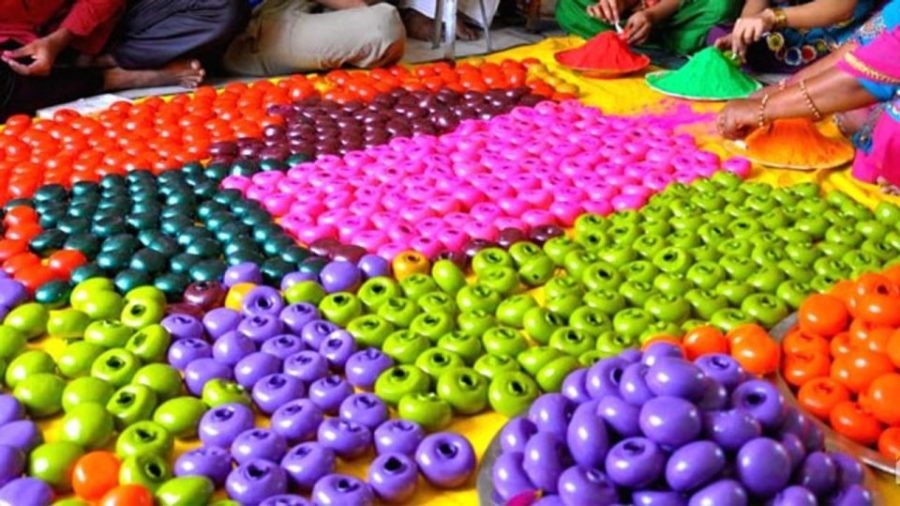Description

Disclaimer: Copyright infringement not intended.
Context
On the festival of Holi on March 25, in select areas of Jaipur, Rajasthan, a traditional practice unfolded involving the throwing of colors using a distinct method known as "Gulaal Gota."
Details
- The tradition of using Gulaal Gota during Holi in Jaipur has a rich history dating back approximately 400 years.
Description of Gulaal Gota
- Gulaal Gota is a small, lightweight ball made of lac and filled with dry gulaal.
- These balls, weighing around 20 grams when filled, are thrown at people during Holi celebrations.
Manufacturing Process
- The process of making Gulaal Gotas involves boiling lac in water to make it flexible.
- Lac, a resinous substance secreted by certain insects, is shaped, colored, and then blown into a spherical shape with the help of a blower called "phunkni."
- Gulaal is then filled in the balls before they are sealed with lac.

Origin of Raw Materials
- Lac is sourced from Chhattisgarh and Jharkhand, where female scale insects are one of the sources of lac.
- To produce 1 kg of lac resin, around 300,000 insects are killed. Lac insects also yield resin, lac dye, and lac wax.
Unique to Jaipur
- Gulaal Gotas are exclusively made by Muslim lac makers known as Manihaars in Jaipur.
- Manihaars' ancestors were shepherds and horse traders who arrived from Afghanistan and settled in Bagru, near Jaipur.
- The tradition is deeply rooted in Jaipur's history, and the Manihaar community has been engaged in this craft for generations.
Economics of the Tradition
- One box of six Gulaal Gota balls is sold for Rs 150, making it costlier than water balloons.
- The whole family of artisans, including women, is engaged in this seasonal work.
- Lac bangles are the main source of sustenance for Manihaars, but the demand for them has declined due to the rise of cheap, chemical-based alternatives.
Challenges
- The government of India has provided "artisan cards" to lac bangle and Gulaal Gota makers to avail benefits from government schemes.
- Some artisans have gained recognition globally, but challenges such as lack of unity among Manihaars and the younger generation's disinterest in artisan work pose threats to the tradition.
- To preserve the tradition, some Gulaal Gota makers have demanded a Geographical Indication (GI) tag, which can help protect the product's authenticity and uniqueness.
|
PRACTICE QUESTION
Q. What is the significance of Bagru in the history of Gulaal Gota making?
a) It's the place where the lac is obtained.
b) It's the place where the Manihaars settled and learned lac-making.
c) It's the place where the Gulaal Gota tradition originated.
d) It's the main market for selling Gulaal Gotas.
Answer: b)
|















